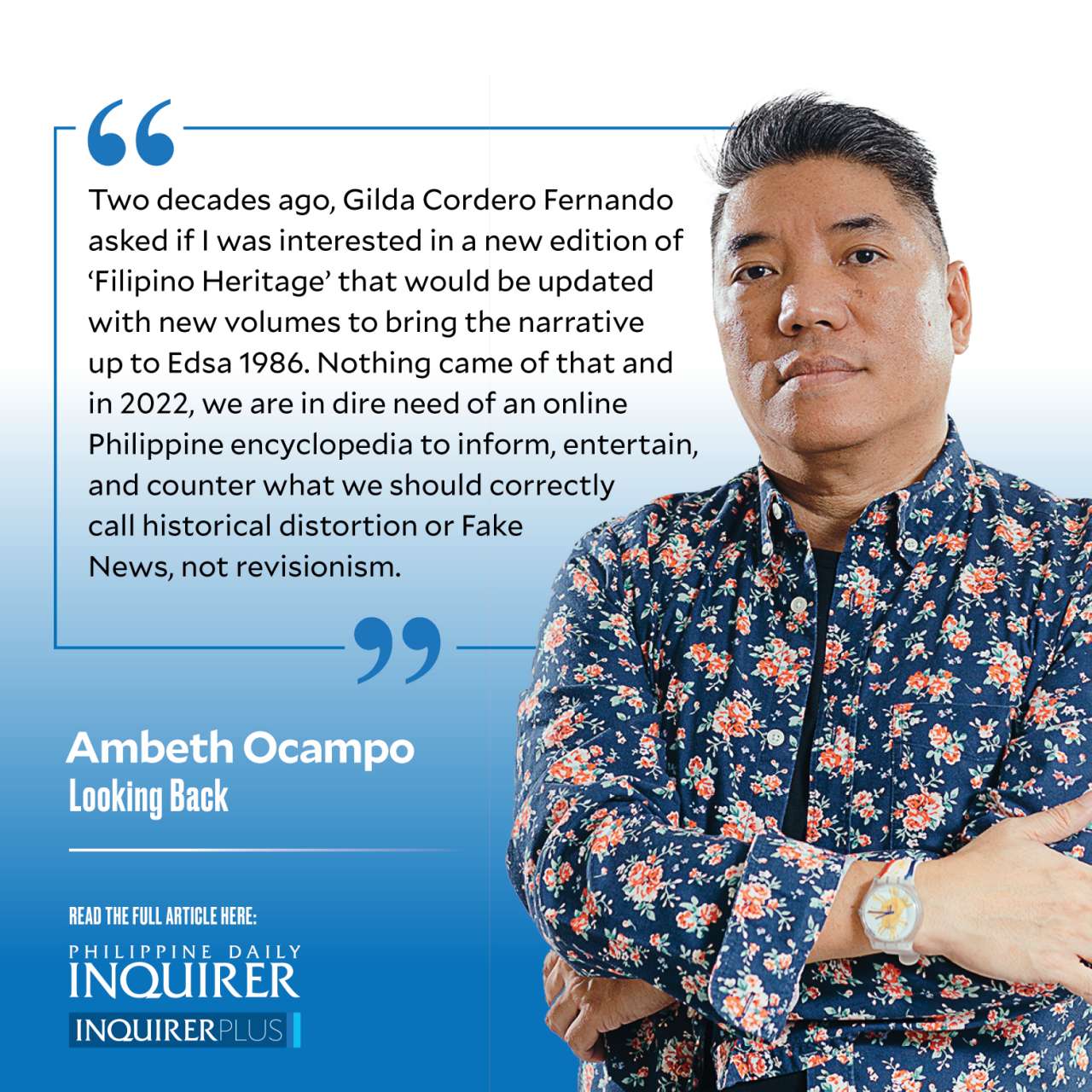Obsolete encyclopedias
Cornejo’s “Commonwealth Directory of the Philippines” (1939) is the thickest book in my library, its width at 4.5 inches or 11 centimeters. Elegantly hardbound in red with gold stamping, the 2,626-page volume was Google for the prewar generation. Weighing 4.15 kilos, I used Cornejo more as a door stopper than desk reference. When consulted, it is a mine of useless information for this column.
Print encyclopedias, like manual typewriters, are curios in the digital age. Once upon a time, before Google, we had the print “Encyclopedia Britannica” that ran for 244 years until it threw in the towel and went online after its 2010 edition. With 32 volumes and 32,640 pages, Britannica occupied significant shelf space but not as much as its Spanish equivalent—the 72-volume “Enciclopedia universal ilustrada europea-americana,” better known as “Espasa” (for its publisher Espasa-Calpe), whose individual volumes were thicker than the PLDT telephone directory. I discovered “Espasa” because of its comprehensive Philippine entries contributed by the gentleman scholar Alfonso T. Ongpin, whose father Roman Ongpin is honored by the famous street that cuts through Binondo. “Espasa” started as a Filipiniana reference, a way to learn and practice Spanish. It became my portal to the Hispanic world. Browsing through “Espasa” made me realize how my generation was separated from the past and the old world because of language. It also made me appreciate our lost Hispanic heritage, 333 years of history depicted as the Dark Ages in contrast to the Enlightenment and Renaissance that were in the American colonial period. Carmen Guerrero Nakpil said it best: The Philippines spent 400 years in a convent and 50 years in Hollywood.
Without a dedicated online Philippine encyclopedia, I have held on to a number of bulky obsolete references, starting with the one-volume Cornejo’s encyclopedia. I also have the third and last edition of Zoilo Galang’s “Encyclopedia of the Philippines” (1950), a gift from Guillermo Tolentino’s widow. Galang has 20 volumes as follows: Vols. 1-2 Literature, Vols. 3-4 Biography, Vols. 5-6 Commerce and Industry, Vols. 7-8 Art, Vol. 9 Education, Vol. 10 Religion, Vols. 11-12 Government and Politics, Vols. 13-14 Science, Vols. 15-16 History, Vols. 17-18 Builders, and Vols. 19-20 General Information. Though published postwar, much of the third edition’s content is prewar vintage with much reconstructed from material lost during the 1945 Battle for Manila.
I hardly use Galang, except the two volumes on Philippine art, because I prefer the 10-volume “Filipino Heritage: The Making of a Nation” (1978), an encyclopedia born from a stillborn series of weekly supplements for The Manila Times that was shuttered in 1972 by martial law. “Filipino Heritage” is profusely illustrated in color with texts and side stories scholarly but accessible. Stellar is the only word to describe the people behind it: editor in chief was Alfredo Roces assisted by Carlos Quirino and Gilda Cordero Fernando who fielded many contributors that included Nick Joaquin, Lucrecia Kasilag, Jose Maceda, and Alejandro Roces (later proclaimed National Artists), and Teodoro A. Agoncillo (later proclaimed National Scientist). Ben Cabrera, art director of the first volume, is also a National Artist. “Filipino Heritage” was so successful it threatened the Marcos “special research project” team then compiling their own failed “Encyclopedia Filipiniana” and the ghostwritten multivolume “Tadhana: History of the Filipino People” that appeared under the byline of Ferdinand E. Marcos.
After “Filipino Heritage,” my go-to references are: the 10-volume “CCP Encyclopedia of Philippine Art” (first edition 1994, digital edition 2020) and the 10-volume Reader’s Digest “Kasaysayan: The Story of the Filipino People.” Originally priced at over P10,000 when it was launched in 1998, it went on sale a decade later at P1,998 per set. “Kasaysayan” was the best, most readable Philippine history for its time. Full disclosure here, I contributed to “Kasaysayan.” Two decades ago, Gilda Cordero Fernando asked if I was interested in a new edition of “Filipino Heritage” that would be updated with new volumes to bring the narrative up to Edsa 1986. Nothing came of that and in 2022, we are in dire need of an online Philippine encyclopedia to inform, entertain, and counter what we should correctly call historical distortion or Fake News, not revisionism.
—————-
Comments are welcome at aocampo@ateneo.edu





















